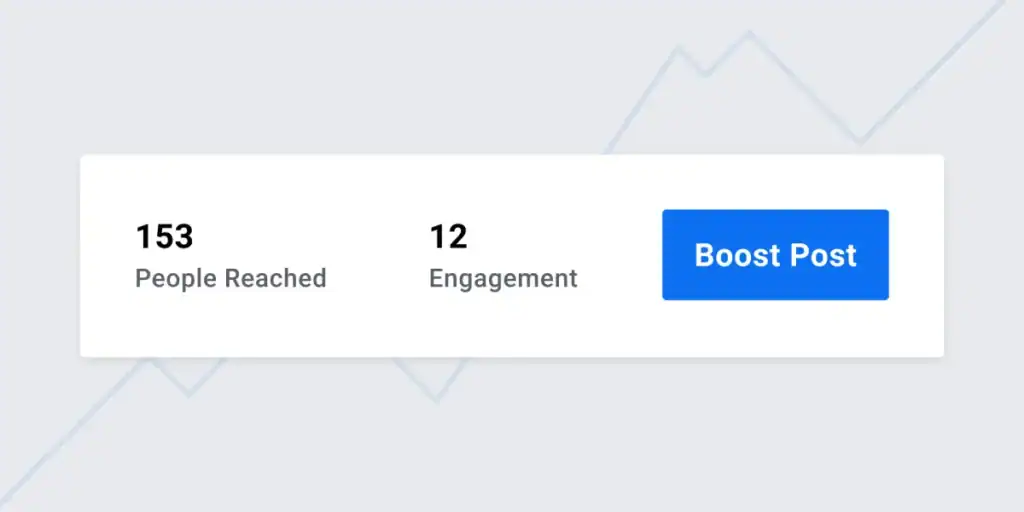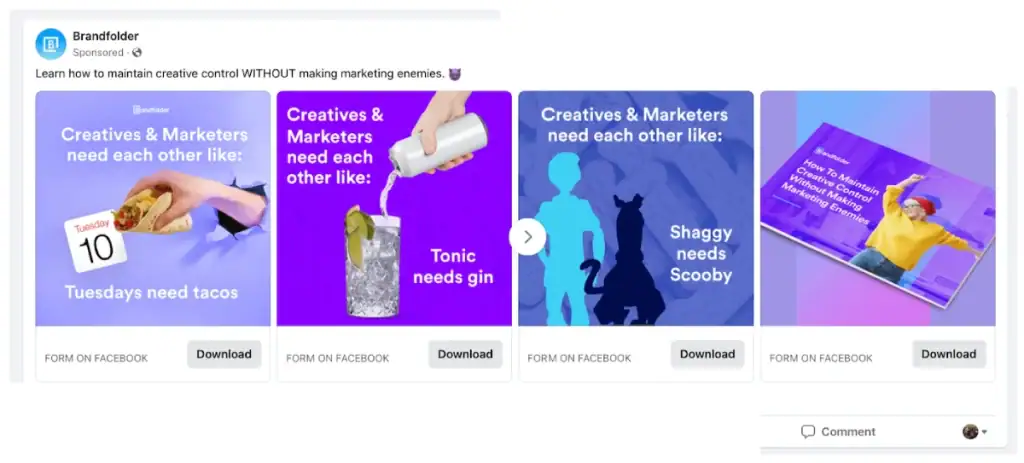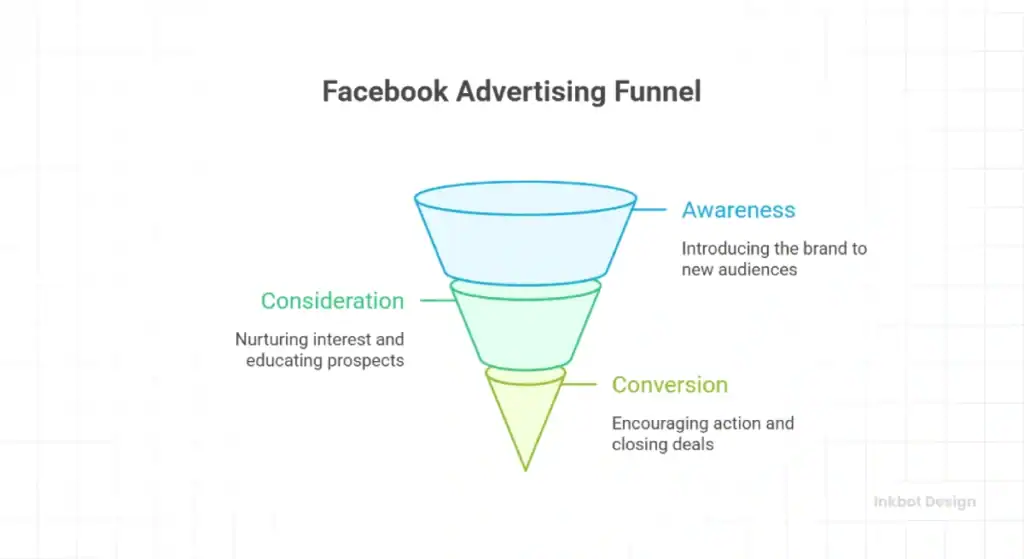Facebook Marketing Guide: Stop Boosting, Start Selling
Let's get one thing straight from the start.
Facebook doesn't care about your small business.
It’s not your mate, nor a public service designed to help you find a few local customers.
It is a ruthlessly efficient, publicly traded advertising machine built with one purpose: to separate you from your money.
Your job isn't to “do Facebook.” Your job is to get a predictable, profitable return from this machine. Everything else—likes, shares, clever comments, viral videos—is noise. It’s a theatre. And it’s costing you a fortune.
If you’re ready to stop playing and start winning, read on. If you’re looking for another fluffy article about “building engagement,” this isn't it.
- Facebook prioritises profit over community; focus on return on investment over engagement metrics.
- Stop using the "Boost Post" feature; it offers little control and real targeting for effective marketing.
- Install the Facebook Pixel for tracking conversions and optimising ads effectively.
- Use A/B testing to refine your ads and improve performance based on actual customer responses.
- Create a structured marketing funnel to transform leads into customers systematically; avoid random acts of advertising.
Let's Be Frank: Facebook Isn't Your Friend

The entire platform, from the news feed to the Marketplace, is engineered to hold user attention. It then sells that attention to the highest, or smartest, bidder. That’s you.
You are not a community member. You are a customer of Meta's advertising products. You'll start making better decisions when you shift your mindset from user to customer.
The game isn't about being popular. It's about being profitable. You don't need everyone to like you. You need the right people to buy from you. That is the only goal. If your marketing activity doesn't point directly to a sale or a qualified lead, you must question why you're doing it.
The £10-a-Day Trap: Killing the ‘Boost Post' Myth for Good

Here we are – my biggest pet peeve. The most brilliant, and in my opinion, devious feature Facebook ever created is the “Boost Post” button.
It sits there, glowing blue, promising you the world. “Your post is performing 95% better than other posts on your Page. Boost it to reach a wider audience!” It feels like a pat on the back. It feels like you're doing real marketing.
You're not.
Why is the “Boost” button just a tax on hope?
Boosting a post is the marketing equivalent of a slot machine. You put your money in, pull the lever, and hope for the best. It's designed for ease of use, not for results. It's a lazy tax. You pay a fee for not wanting to learn how the machine works.
When you hit “Boost,” you're telling Facebook, “Here's a tenner, go find some people who might ‘engage' with this.” Facebook happily takes your money and shows it to people who are chronic ‘likers' and ‘sharers'—not necessarily buyers. They deliver on the metric they promised (engagement), you get a little dopamine hit from the notifications, and your bank account gets a little smaller.
What you're giving up: control, data, and real targeting.
The real power of Facebook advertising lies in a tool called Ads Manager. By choosing the easy blue button, you’re voluntarily giving up:
- Granular Targeting: The ability to target users based on thousands of specific behaviours, life events, and interests.
- Strategic Objectives: You can’t tell Facebook to find people likely to convert, fill out a lead form, or make a purchase. You’re stuck with the vague goal of ‘engagement.
- Creative Control: You lose the ability to A/B test different images, headlines, and calls to action to see what works.
- Retargeting Power: You can't easily build audiences of people who watched your video or visited your website to show them a follow-up ad.
The vanity metrics hangover: why 500 likes won't pay your mortgage.
So your boosted post got 500 likes and 27 shares. Brilliant. How many new leads did it generate? How many sales did it drive?
Silence.
Likes don't pay the bills. They don't make payroll. Vanity metrics are fool's gold. They make you feel productive while your business stagnates. We must kill this addiction to pointless numbers and focus on what moves the needle. A single, qualified lead is worth more than a thousand likes from people who will never buy from you.
The Grown-Up's Toolkit: Ads Manager is Your New Best Mate
If you're serious, you need to live in Ads Manager. It looks intimidating at first. It's meant to. It's a professional tool, not a toy. But you only need to understand 20% of it to get 80% of the results.
Think of it like the cockpit of an aeroplane. The ‘Boost' button is a big red button that says “FLY?”. Ads Manager has the yoke, throttle, and flaps—the controls that let you steer the plane to a specific destination.
The most crucial bit of code on the internet: The Facebook Pixel
Before spending a pound on a proper ad, you must install the Facebook Pixel (now technically called the Meta Pixel).
In plain English, the Pixel is a small snippet of code you place on your website. It acts as a spy. It watches what people do on your site after they click your ad and reports back to Facebook.
Running ads without the Pixel is like driving blindfolded with the radio on full blast. You're spending money, things are happening, but you have no idea what's working, who's doing what, or where you're going.
The Pixel allows you to:
- Track Conversions: See which ads lead to sales, leads, or other valuable actions.
- Build Custom Audiences: Automatically create lists of people who visited specific pages, added items to their cart, or spent the most time on your site. This is the foundation of powerful retargeting.
- Optimise Your Ads: Facebook's AI uses the Pixel data to learn what your ideal customer looks like. It then goes and finds more people like them. It makes your ads smarter over time.
Apple's iOS 14 updates made the Pixel's tracking less perfect. It's not the all-seeing eye it once was. But it is still utterly essential. Having 70% of the data is infinitely better than having 0%. Install it. It’s not optional.
Finding Your People (Without Wasting a Fortune)
The single biggest reason businesses fail with Facebook Ads is that they show the right message to the wrong people. You could have the best offer in the world, but you will fail if you're trying to sell steaks to a vegan convention.
Targeting is everything. Here are the three groups you need to understand.
The Three Audiences You Need to Know
- Cold Traffic: People Who've Never Heard of You. This is your biggest, but riskiest, audience. You're interrupting their day. The key is to be specific. Do not just target “United Kingdom, Age 25-55, Interested in ‘Business'”. That's a black hole for your money. Get specific.
| Lazy Targeting (Waste of Money) | Smart Targeting (Worth Testing) |
| Interest: ‘Fitness' | Interest: ‘F45 Training' AND ‘Lululemon' |
| Interest: ‘Cars' | Behaviours: ‘Owns a BMW 3 Series' |
| Demographics: ‘Small Business Owners' | Interest: ‘Xero' AND ‘Companies House' |
- Warm Traffic: Your Golden Goose. These people have put their hand up. They've shown some interest. They've visited your website, watched one of your videos, or engaged with your page. You create these lists using your Pixel data. They are your most valuable asset. Talking to this group is called retargeting, where most of the profit is made.
- Hot Traffic: The Money-Makers. This is your existing customer list or a strong email newsletter list. You can upload this list to Facebook, and it will match the emails to user profiles. You can then show them ads for new products, special offers, or ask for referrals. They already trust you. It's the easiest sell you'll ever make.
Lookalike Audiences: Your secret weapon for scaling.
This is where it gets clever. Once you have a good “source” audience (e.g., a list of your best customers or a list of people who have submitted a lead form, generated by your Pixel), you can ask Facebook to build a “Lookalike Audience.”
Facebook's AI analyses thousands of data points about the people in your source list and then scours the entire country to build a brand new, much larger audience of people who share those same characteristics. It's the fastest, most effective way to find new customers who look like your existing ones.
Your Ads Probably Look Too Good (And Your Copy is Boring)

Here's a truth that makes graphic designers weep. Your beautifully crafted, perfectly branded, agency-level ad is getting ignored.
Why? Because it looks like an ad.
People are scrolling through pictures of their niece's birthday and their mate's holiday. They have developed “ad blindness.” Anything that looks too slick, corporate, or polished gets scrolled past in a fraction of a second.
Pet Peeve #2: Ditch the slick corporate gloss.
What stops the scroll? Something that looks like it belongs in the feed. Something that looks real.
This is why “ugly” ads often win. A simple video you shot on your phone. A low-fi graphic with a bold, can't-miss-it headline. A customer's photo of your product in use (this is called User-Generated Content or UGC, and it's gold dust).
Authenticity feels real. Polish feels like a sales pitch. Don't be afraid to look rough around the edges if it means you'll get noticed.
Copywriting that doesn't suck: The AIDA framework without the jargon.
People don't read ads; they skim them. You have about two seconds to grab them. A simple, time-tested structure for your ad text is AIDA.
- Attention (Hook): The first line. Call out your audience directly. “Attention small business owners in Manchester…” or ask a piercing question: “Tired of your website gathering digital dust?”
- Interest (Problem): Twist the knife a little. Agitate the problem you solve. “You're spending hours creating content, but the only people who see it are your mum and dog.”
- Desire (Solution): Introduce your product or service as the clear, logical solution to that pain. “Our 5-step system gets your phone ringing with qualified leads in under 30 days.”
- Action (CTA): Be specific and tell them precisely what to do. Not “Learn More.” That's weak. Try “Click ‘Get Quote' to receive your free, no-obligation proposal now.”
The power of a simple, clear offer.
I once had a local gym client trying to sell a complex, 12-month “Total Body Transformation Package” for £1,500 directly from an ad. The ads were failing miserably. The offer was too big, expensive, and high-commitment for a cold audience.
We scrapped it. We ran a new ad with a simple offer: “Get a 7-Day Free Pass to Our Gym.”
The cost per lead dropped by 90%. People flooded in for the free pass. The gym staff were good at their jobs, so they converted a predictable 15% of those free trials into full members. We stopped trying to sell a marriage on the first date and simply offered a cup of coffee. Simplify your offer.
Never stop testing: Your first idea is probably wrong.
You are not your customer. The ad you love the most will probably be the one that performs the worst. The only way to know for sure is to test.
A/B testing (or split testing) sounds complicated, but it's simple. You create one “control” ad and then a variation where you change only one thing.
- Test one headline against another.
- Test a picture of a person against a picture of a product.
- Test a red button against a green button.
Run them with a small budget. After a few days, Facebook will have enough data to show you a clear winner. You kill the loser, and the winner becomes your new control. Then you test something new against it. This process of constant improvement is how you go from losing money to printing it.
Building a Machine, Not Just Running Ads

Random acts of advertising lead to random results. A single ad, no matter how good, is not a strategy. You need to build a simple machine that turns strangers into customers. This is what marketers call a “funnel.”
What the hell is a “funnel”? (The simple version).
Forget the complicated diagrams. A basic funnel looks like this:
- The Ad: A potential customer clicks your compelling ad on Facebook.
- The Landing Page: They don't go to your messy homepage. They go to a clean, simple page with ONE job: to expand on the ad's promise and get them to take ONE action. Usually, this means giving you their email address in exchange for something valuable (a “lead magnet”). This could be a PDF guide, a checklist, a discount code, or a free consultation.
- The Thank You Page: After they give you their email, they land on a page that thanks them and tells them what to do next (e.g., “Check your inbox for the guide!”). You can even put a special one-time offer on this page.
- The Email Sequence: Now they're on your email list. You can follow up with them automatically, building trust, providing value, and eventually, asking for the sale.
The ad's only job is to get the click. The landing page's only job is to get the lead. The job of the email is to get the sale. Each step has one job. That’s a machine.
The magic of retargeting: Talking to people who already know you.
Remember those warm audiences we talked about? Your Pixel is building them for you every day. A simple, profitable retargeting strategy is this:
- Audience: Anyone who visited your landing page in the last 14 days but didn't sign up.
- Ad: Show them a different ad. A testimonial from a happy client. A video answering the most common objection. Something that overcomes their hesitation.
This is a cheap and ridiculously effective way to recapture lost leads. It can often double the effectiveness of your entire campaign.
A 2022 report showed that the average conversion rate for website visitors is around 2.6%, but retargeted visitors convert at nearly 10% [source]. It’s a numbers game you can’t afford to ignore.
The Only Numbers That Matter
Opening Ads Manager can feel like you’re staring at the stock exchange. There are dozens of columns, hundreds of acronyms. You can safely ignore 95% of them.
Here’s your new dashboard. Focus only on these.
| Metrics to Watch (Your Business Health) | Metrics to Ignore (Vanity & Noise) |
| ROAS (Return On Ad Spend) | Post Likes/Reactions |
| Cost per Result (e.g., Cost per Lead) | Post Shares |
| Link Click-Through Rate (CTR) | Post Comments |
| Link Cost Per Click (CPC) | Reach / Impressions (mostly) |
| Conversion Rate (on your landing page) | Page Follows |
ROAS is the king. How many pounds did you get back for every £1 you put in? If you spend £100 and generate £500 in sales, your ROAS is 5x.
Cost per Lead is your key metric for lead generation. How much does it cost you to get one person's email address? If you know an email lead is worth £50 to your business over their lifetime, and you're acquiring them for £5, you have a winning machine.
When to kill an ad: A simple checklist.
Don't get emotionally attached to your ads. Be ruthless.
- Is the CTR low after 48 hours? If less than 1% of people who see your ad click the link, the ad fails to get attention. The creative or the hook is weak. Kill it.
- Is the Cost per Result too high? You've run the ad for a few days, and your Cost per Lead is £50 when you know you can only afford to pay £10. The offer isn't resonating with the audience. Kill it.
- Is the frequency creeping up? If the ‘Frequency' metric shows that people are seeing your ad 3, 4, or 5 times and still not acting, they're tired of it. This is ad fatigue. Refresh the creative or kill the campaign for that audience.
A Final, Brutal Truth
For years, I've heard business owners say it. “Facebook Ads don't work for me.” “My reach is dead.” “The algorithm is screwing me.”
Stop.
The algorithm isn't a mysterious beast you have to please. It’s a mirror.
It reflects the quality of your offer, the power of your creativity, and the depth of your understanding of your customer. If your ads fail, one of those three things is broken. The platform is just the amplifier. It makes good marketing great and bad marketing disastrous.
Your success has nothing to do with gaming a system and everything to do with solid, fundamental marketing principles. Know your audience. Make them an irresistible offer. And present it to them in a way that gets their attention.
That's it. That's the whole game.
This guide gives you the framework. The real work is in the execution. If you've read this and realised your marketing has been more ‘theatre' than ‘business', that's the first step.
If you want an expert eye on how these principles apply directly to your brand and want to build a real marketing machine, that's what we do. Explore our digital marketing services to see how we help businesses like yours get real results.
Or, if you’re ready to talk specifics, request a no-nonsense quote here.
Facebook Marketing Guide (FAQs)
Is Facebook marketing still effective in 2025?
Yes, absolutely. While the platform has changed, the number of daily active users and the power of its targeting data are unmatched. It's more competitive, so a solid strategy is more critical than ever, but it remains a primary channel for customer acquisition for most businesses.
How much should a small business spend on Facebook ads?
Start small. A budget of £10-£20 per day is enough to test an offer and gather data. The goal isn't to spend a lot; it's to prove you can get a positive return on ad spend (ROAS). You can scale the budget once you have a profitable, winning ad campaign.
What's a good ROAS (Return On Ad Spend) for Facebook ads?
This varies wildly by industry, profit margins, and business goals. A standard benchmark is a 4:1 ROAS (£4 back for every £1 spent). However, for some businesses with high customer lifetime value, a 2:1 ROAS might be fantastic, while companies with thin margins might need 10:1.
How long does it take for Facebook ads to start working?
You should get an idea of an ad's initial performance (like its Click-Through Rate) within 48-72 hours. However, it can take Facebook's algorithm 4-7 days to exit the “learning phase” and fully optimise delivery. Judging a campaign's profitability can take several weeks of data collection.
Why are my ads getting clicks but no conversions?
This is a classic problem. It usually points to a disconnect between your ad and your landing page. The ad made a promise that the landing page wouldn't be kept. Check for: a confusing message, a slow-loading page, a complicated form, or an offer that isn't as compelling as the ad made it seem.
Should I use Campaign Budget Optimisation (CBO)?
For beginners, yes. CBO (now called ‘Advantage campaign budget') allows Facebook to automatically distribute your budget to the best-performing ad sets and ads within your campaign. It simplifies management and generally leads to better results than manually setting budgets.
What's the best objective to choose for my campaign?
Choose the objective that matches your actual business goal. Don't choose ‘Traffic' if you want sales. Choose ‘Sales' (or ‘Conversions'). Don't choose ‘Engagement' if you wish to lead. Choose ‘Leads'. Give the algorithm clear instructions about the result you want.
Do I need video ads?
You don't need them, but they are often highly effective. Video captures attention and conveys emotion and information far better than a static image. Even a simple, authentic video shot on a phone can outperform a slick graphic. It's highly recommended to test them.
How do I know if my audience targeting is too narrow or too broad?
When creating an audience, Facebook provides an “Audience Definition” gauge. For a cold traffic campaign in the UK, a potential reach of 500,000 to 2 million is often a good starting point. If it's much smaller, you risk high costs and ad fatigue. If it's much larger, your targeting might be too vague.
What's the most common mistake beginners make?
Aside from using the ‘Boost Post' button, the most common mistake is impatience. They don't let the algorithm learn, change too many variables simultaneously, and kill ads prematurely without enough data. A methodical, patient approach always wins.
Can I do Facebook marketing without a website?
You can use Facebook's on-platform tools like Lead Forms and Messenger campaigns to generate leads without sending users to an external site. However, installing a website with a Pixel gives you far more data, control, and retargeting power in the long run.
How does the iOS 14/privacy update affect my ads?
It reduces the amount of data the Pixel can gather from Apple users who opt out of tracking. This makes conversion tracking less precise and retargeting audiences smaller. However, it's still highly effective. You must verify your domain with Facebook and use their Aggregated Event Measurement to track key actions. It's a hurdle, not a brick wall.


